Remembering the Las Vegas Strip’s Founding Mother
Posted on: May 14, 2023, 02:21h.
Last updated on: May 14, 2023, 02:21h.
The Las Vegas Strip has a founding mother, not a founding father. On Mother’s Day, we remember Alice Morris, founder and proprietor the Red Rooster, the very first licensed casino on Las Vegas Boulevard.
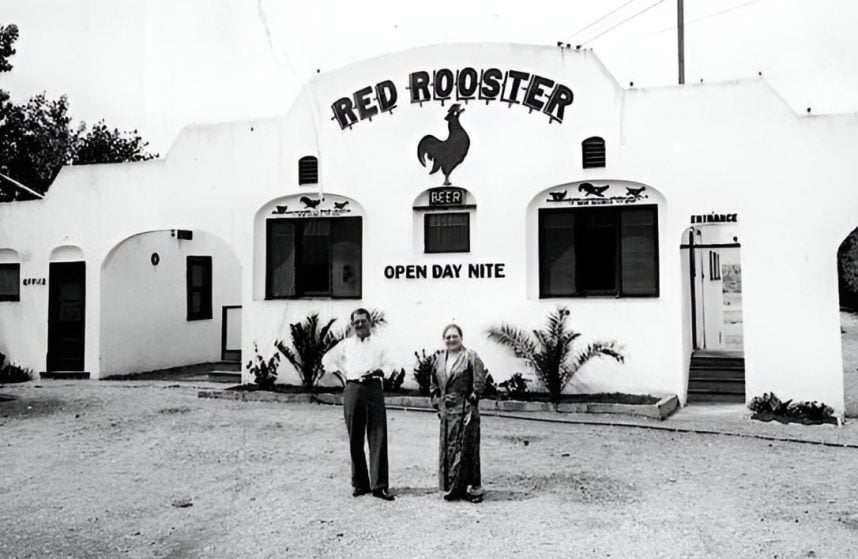
No, mobster Benjamin “Bugsy” Siegel didn’t create the Las Vegas Strip. A whopping four casinos and two full-fledged resorts beat the Flamingo to Highway 91, as the main road from Salt Lake City to Los Angeles was known in 1946. The first was opened n Nov. 26, 1930, on 12 acres where the north gate of The Mirage now stands. At first, it was a nightclub featuring dance marathons, live all-girl bands, and dining. (A chicken dinner would set you back $1.)
There was no gambling yet, at least not of the legal variety. As strange as this sounds, Las Vegas had outlawed it since Sept. 30, 1910.
Amid the moral reform of the Progressive Era of the early 20th century, Nevada banned most forms of gambling,” UNLV history professor Michael Green told Casino.org. “It didn’t become legal again until Governor Fred Balzar signed Assembly Bill 98 on March 19, 1931.”
Anxious to exploit the new revenue stream but having no experience with gambling, Morris did what the owners of many other Las Vegas clubs did at the time: she enlisted the advice of a gambling expert. And who were the gambling experts back then?
Mob Rules
Morris “Goldie” Goldsworth was lured to Las Vegas by the promise of illegal gambling profits in an untapped market. A rising player in the LA gambling racket at the time, he would be found beaten to death by a hammer in the back seat of his car on Oct. 16, 1958. The LA coroner called the gunshot wounds to his head “only superficial.” He was 52.
When he was still breathing, Goldie agreed to set up and run Morris’ gambling operation in exchange for an undocumented cut of the profits. He applied for a modest license — for a blackjack table and three slot machines –, and on April 1, 1931, the Red Rooster became the first Clark County establishment on Highway 91 to receive a gaming license under the new law.
The Red Rooster also became the first Las Vegas Strip casino to lose its gaming license because serving alcohol was another thing that was, surprisingly, against the law at the time. It would remain so across the US until the repeal of Prohibition on Dec. 5, 1933.
Alcohol had been available at the Red Rooster since the day it opened. In February 1931, Prohibition agents even dropped in to issue Morris a warning. And she complied, temporarily. But on May 18, 1931, the Red Rooster received a second visit from the feds that wasn’t so friendly. They arrested Morris and her husband, who were found guilty, granted probation, and fined $500.
Goldie wasn’t arrested during the raid. But when he applied to renew the Red Rooster’s gaming license on July 7, 1931, it was denied due to the previous liquor violation.
Other Pre-Flamingo Strip Casinos
Like the Red Rooster, the Pair O’ Dice opened as a nightclub and restaurant in 1930, serving alcohol under the table. Unlike the Red Rooster, however, owners Frank and Angelina Detra never got busted. They also applied for a gaming license but didn’t receive one until May 1931, a month after the Red Rooster was issued theirs.
The El Rancho Vegas opened in April 1941. It had the largest casino on Highway 91, with 70 slot machines and four table games. It also had its own swimming pool and a 63-room hotel. So, it can rightfully be called the first resort on the Las Vegas Strip. As far as casinos go, however, it was No. 3.
In 1941, the Pair O’ Dice was sold and incorporated into the Hotel Last Frontier. Its 1942 grand opening made it the fourth official casino on the Strip and the second resort.
The Flamingo Hotel didn’t open until Dec. 26, 1946, as the future Las Vegas Strip’s fifth casino and third resort.
Red Rooster Crows On
The Red Rooster’s timeline continued after losing its casino license. In 1933, Clark County gave Morris’s business a new life by granting it a dance hall license. After Prohibition was repealed later that year, the county followed up with a beer-only liquor license. Though the Red Rooster suffered a fire in July 1933, Morris rebuilt and reopened it on Dec. 30 of that same year. It remained popular throughout World War II.
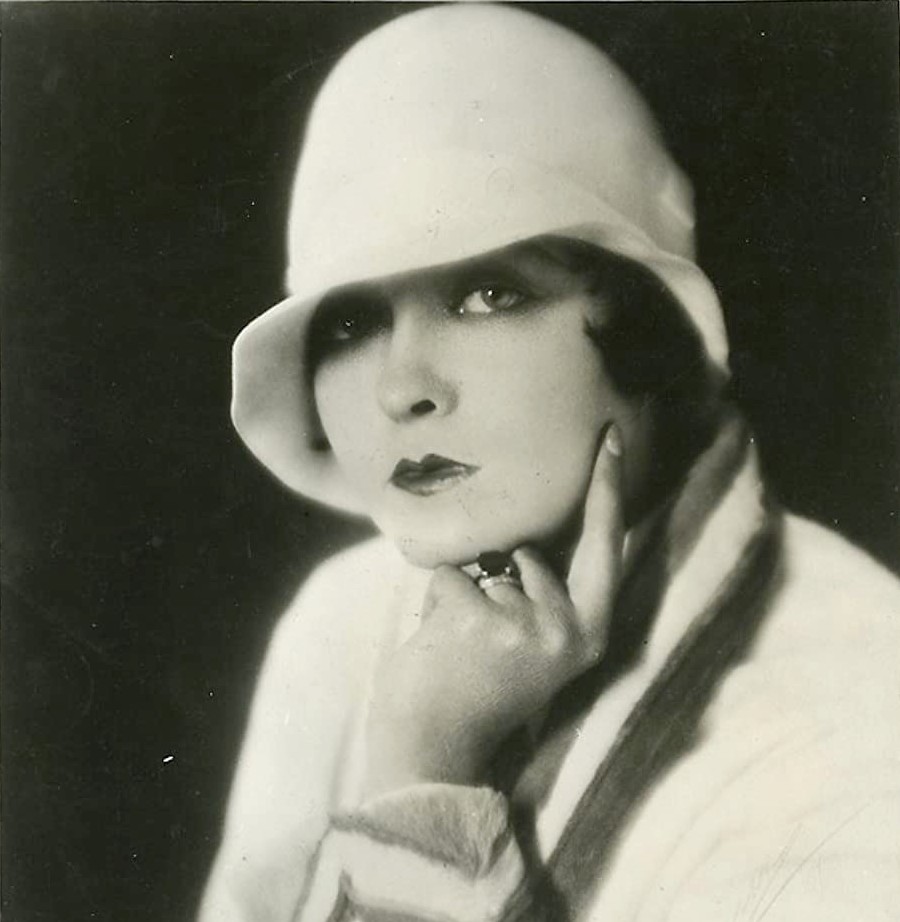
In 1947, Morris sold the Red Rooster to former vaudeville star Grace Hayes. By then, a motel, the Sans Souci (French for without care), had been added to the property. In 1962, it would be demolished to create The Castaways.
Like so many former vaudevillians, Hayes was unable to transition to big-screen stardom. The singer and actress had managed to nab just two leading roles, playing a version of herself in 1936’s Maid for a Day and in 1941’s Zis Boom Bah.
So, Hayes enacted her Plan B. Exploiting her fading name recognition, she opened the Grace Hayes Lodge in Sherman Oaks, Calif., in 1938.
After deciding to relocate both herself and her club to Las Vegas, she paid Morris $15K for the Red Rooster and the 12 acres it sat on, renaming the club after herself and having a ranch house built behind it as her residence.
The club remained successful with Hayes at the helm, attracting many of the town’s early movers and shakers. In a 1981 interview with the Las Vegas Review-Journal, Hayes estimated that Howard Hughes was in the place at least three times a week.
“I don’t know what I served him,” Hayes told the newspaper. “I know I served him a drink. I mixed a drink. He didn’t care what it was. He never drank it, and he never paid me for a drink in his life.”
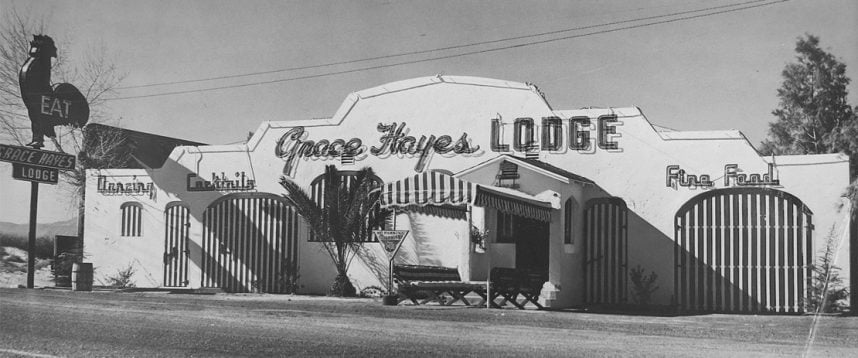
Growing tired of operating a club, Hayes leased it to others. When Willie Martello, better known for operating houses of gambling and prostitution in Searchlight, Nev., took over in 1949, he changed its name to Willie Martello’s Red Rooster. That’s because its regulars never stopped referring to the club by its former name.
After Martello, the club operated under a revolving door of different owners and new names. These included the Hi-Ho Club, The Patio, The Rendezvous, and finally, the Grace Hayes Lodge again. The club closed in 1957 and was torn down in 1959 by Standard Oil (which became Mobil Oil in 1966). Hayes had leased the land to the company to open a gas station.
Hayes Stays
Hayes continued living in the ranch house on her property. It eventually made history as the last remaining private home on the Strip. Her son and daughter-in-law joined her in Vegas, entertainers Peter Lind Hayes and Mary Healy, who were actively involved in the community.
In 1987, Steve Wynn paid Hayes $2M for her house and the Mobil station where the Red Rooster once stood. As part of the deal, she lived out her final days in a lavish suite at Wynn’s Golden Nugget resort downtown. Ill health forced Hayes to enter the Las Vegas Convalescent Center, where she died at age 93 in 1989. That’s the same year Wynn opened The Mirage on the site of her former home.
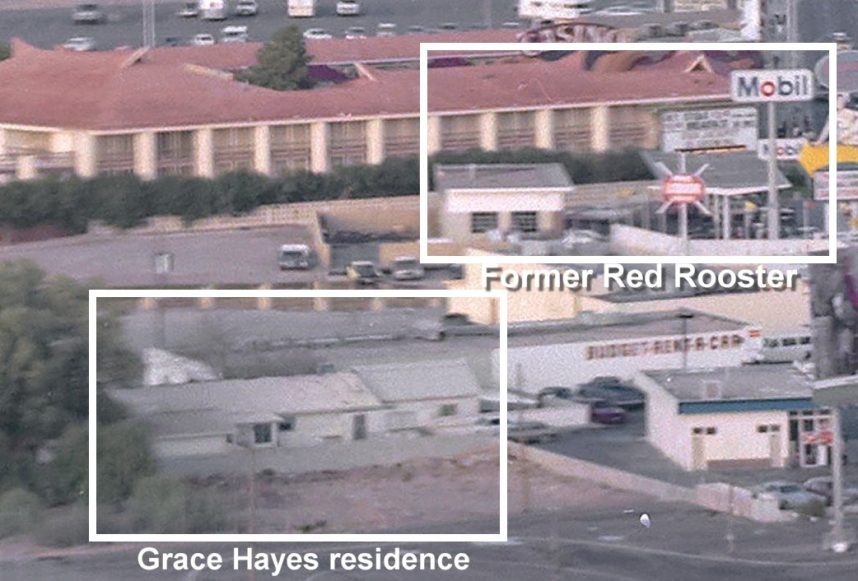
On almost the exact spot where the Red Rooster once stood, Wynn built The Mirage’s most famous public attraction. Sometime in 2024, his fake volcano is set to be demolished by Hard Rock International, which purchased The Mirage last year for $1.1B. The resort’s new owner intends to erect a 36-story guitar-shaped hotel tower in its place.
Since news of the volcano’s impending demolition broke, Baby Boomers and Gen-Xers have taken to social media to complain about Las Vegas’ lack of respect for its history. What’s amusing is that they think the volcano is the most historical thing that once occupied this site.
When you first see that guitar tower climbing toward the sky, know it is rising from the ashes of Las Vegas history.
“Remember the pioneers who came first,” Green said, “in this case, Grace Hayes and her predecessor, Alice Morris, the founding mother of the Las Vegas Strip.”
Related News Articles
7 Places Where You Can Still Experience Classic Las Vegas
Fake History: ‘Historic’ Showgirl Sign isn’t the Original
Vegas Vic Sign Comes Slowly Back to Light
Las Vegas Casino Cyberattacks: A Timeline
Most Popular
Las Vegas Overstated F1 Race’s Vegas Impact — Report
Vegas Strip Clubs Wrestle in Court Over Animal Names
Mega Millions Reportedly Mulling Substantial Ticket Price Increase
Las Vegas Strip Stabbing Near The Strat Leaves One Man Dead
Most Commented
-
End of the Line for Las Vegas Monorail
— April 5, 2024 — 90 Comments -
Mega Millions Reportedly Mulling Substantial Ticket Price Increase
— April 16, 2024 — 6 Comments -
Long Island Casino Opponents Love New York Licensing Delays
— March 27, 2024 — 5 Comments -
VEGAS MYTHS RE-BUSTED: Slot Machines Can Be ‘Due’
— April 12, 2024 — 4 Comments
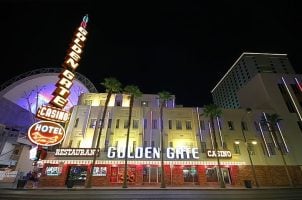

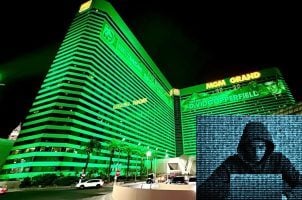










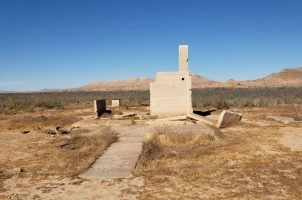

Last Comment ( 1 )
I love this! Happy Mother’s Day to my Great Grandmother Grace Hayes! I appreciate seeing her name kept alive and thank you for sharing a snippet of her story. Before I saw this, we were talking at dinner tonight about how Grace was colorblind in a time where it was not popular to be so, and how as long as you paid your bill and followed the rules, anyone was welcome at her establishment. Great article! Thanks again!